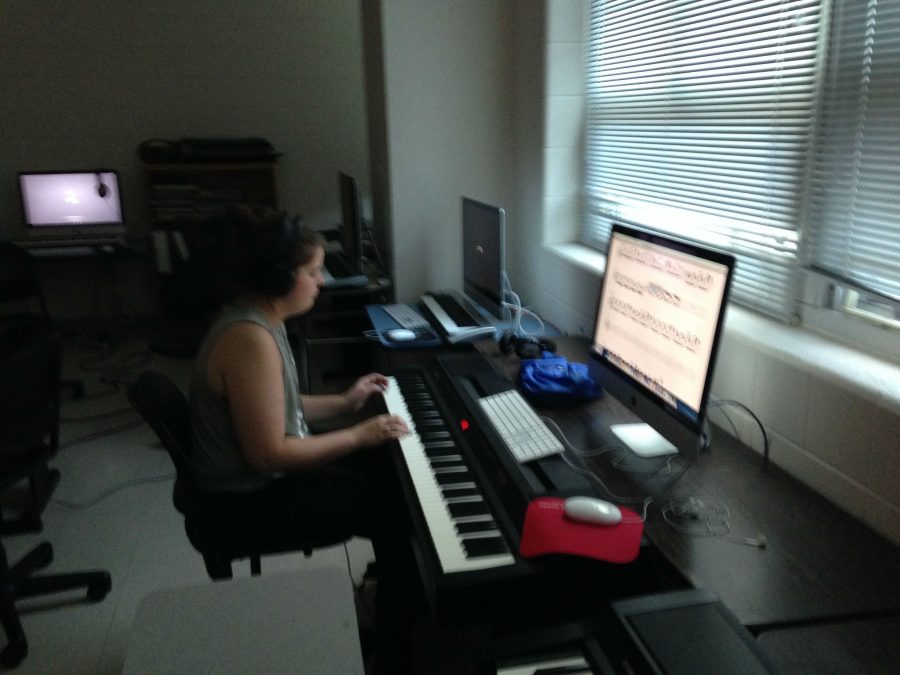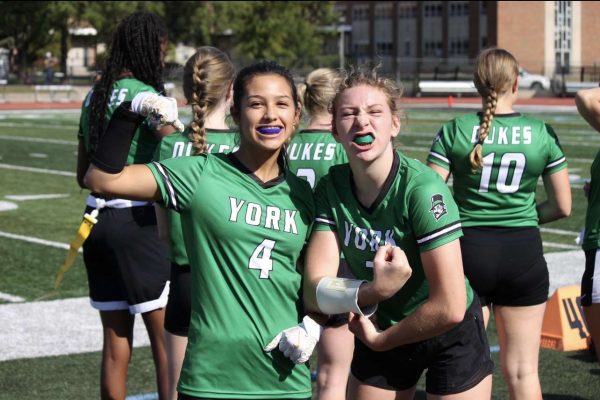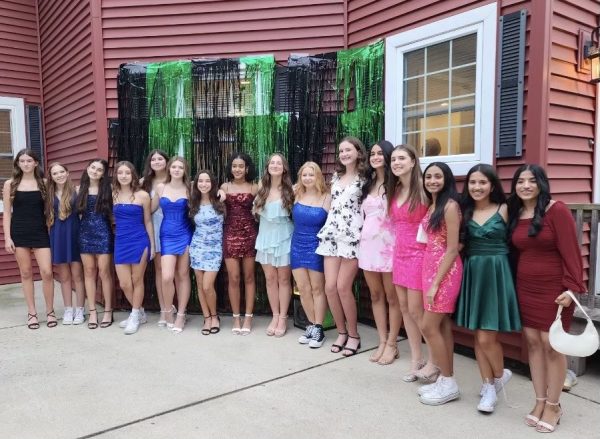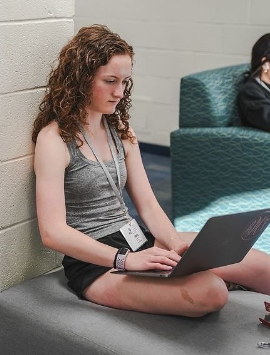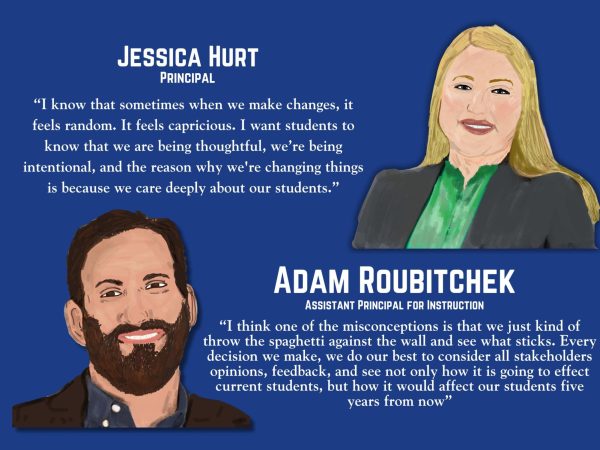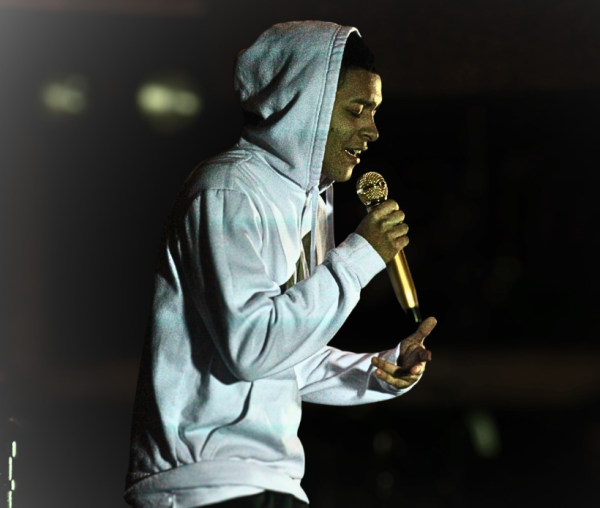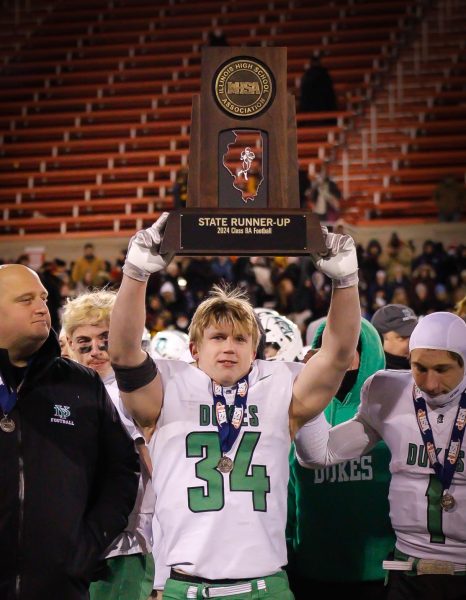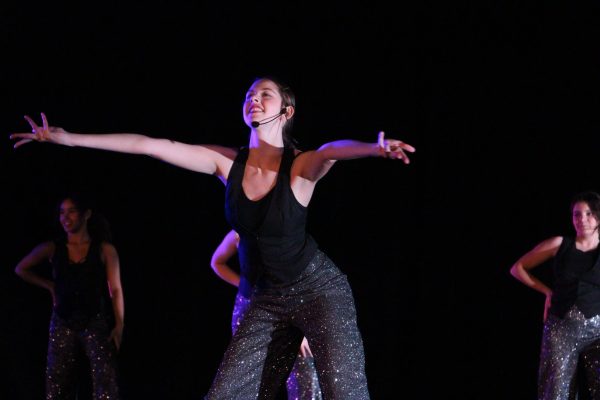Technology unleashes students’ creativity in Music Production
Ali Gley, 17, senior, practices a piano peice.
Just when the 7:40 a.m. bell rings, Mr. Pavlik enters the locker room which connects to the band room and the Music Production room, on the first floor of the academic building. He unlocks the door and the small group of students swarm to their computers. They take some time to start up, so the students begin to chat about movies they’ve seen. They are distracted by conversations at first, but the atmosphere quickly begins to change. As the computers start to turn on, the room gets quieter, and the predominant sound becomes a student practicing a smooth jazz piece on piano. The students stare at their screens with intense focus as they work on their music. By the term’s end, the students will have each created at least one original piece.
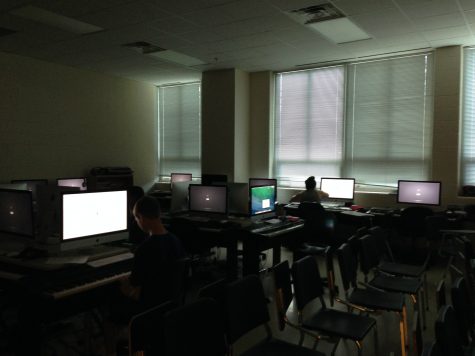
A Joey Alvestad (left) and Ali Gley (right) start their day in Music Production class.
Music Production, taught by Michael Pavlik, is a class in which students write, record (if the composition uses physical instruments), mix, and present their own songs. Students utilize technology frequently in this class, at every step of the process.
The students use a large number of desktop Macs throughout the process. However, it was not easy to acquire such a magnificent arsenal of computing power.
“When I first got to York, I taught a guitar class, three of them actually,” Mr. Pavlik, an experienced teacher with twenty years in education under his belt, explained. “And we rallied to get one Mac laptop. … Once we could show that students really connected with creating music with the software, then we could justify getting a couple of desktop Macs, and then the next year, we got a few more. And then the next year, we were able to get a few more.”
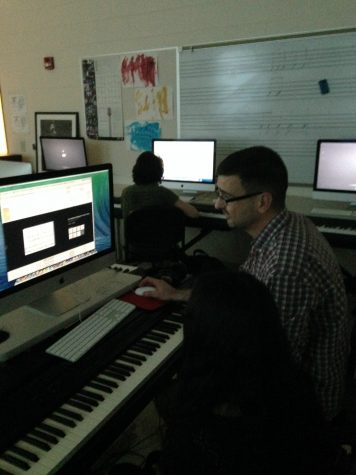
Mr. Pavlik (right) helps a student (left) with a composition
After the computers were acquired, they were able to develop a curriculum for a new class, Music Production. From this slow start, the music production program has grown to many times its original scope, and it’s expected to grow further due to a library program aimed at getting kids interested at an earlier age.
“Now we have a Music Production curriculum that has just as many students as either band or choir or orchestra,” Mr. Pavlik said. “So it’s a whole other section of music that we are thrilled because we are getting a whole other section of students involved in music at York, and that’s really important.”
Some students partake in both the traditional music programs and Music Production, such as choir student Madds Buckley, 16, junior, who is composing a choral piece. Mr. Pavlik indicated that she wants the choir to perform her piece. She used synthesized sounds to make the song.
“I was looking for … a synthesizer that matched human voices, and I found this vocal instrument that went by the name of South African voices,” Buckley said. “And it sounds like people. That’s why I chose it, because usually when you look up voice synthesizers they don’t sound anything like [human voices].”
Andrew Hilgendorf, junior, is also using synthesized sounds in this class, though a different kind of sound. Hilgendorf, 16, is creating house music. He explained how his music writing process works.
“How I started this one was I was just kind of fooling around with the synthesizers they have on Logic, and I found this little lick that I like,” Hilgendorf said. So I just kind of added on from there.”
Some students were going old school and using physical instruments, though that didn’t stop technology from continuing to be heavily involved. Joey Alvestad, 14, incoming freshman, is composing a duet for the drums and marimba. He said that he wrote the song on Sibelius, a music notation writing program.
“As I wrote it, I didn’t really know what the melody was going to be,” Alvestad said. “So I composed the drum part first, and then I wrote in some marimba. And after a while it started to sound pretty good.”
One of the other pieces of software they use, Logic Pro, helped Ali Gley, 17, senior, in the writing process when she was working on a piano piece.
“The computer really helps you out in what to do, because if you don’t know how to do the right rhythm, there’s tons of options,” Gley said.
However, Buckley, who is composing the choral piece, was not so positive about Logic’s rhythmic capabilities in particular.
“Sometimes Logic doesn’t give you the right rhythms, so most of this was actually done by ear and not following Logic, which was a pain in the butt,” Buckley explained.
Mr. Pavlik explained why he thinks the computers in the classroom are important.
“The computers facilitate this … differentiated instruction, in which students are learning about music, but they’re choosing their own path,” Pavlik said. “There’s an autonomy that they have to the learning process that allows them to engage at a level that is really unique. … The technology just facilitates that connection and that learning process.”
In addition to engaging the students, this class is also challenging Mr. Pavlik.
The hardest part, he said, is “learning how to let go. Learning how to trust the students to just go on their own and to choose their own path.” This teaching strategy further contributes to the relaxed atmosphere and autonomy one can find in this class.
According to Mr. Pavlik, the most important lesson students learn in the class is “that they don’t need a teacher in order to connect with music, to learn, to grow as a musician, that they are a musician, they are an artist, and they have the tools to continue to develop as a musician themselves.”


